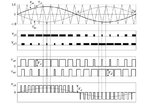ricperes
Junior Member level 2
IR2110 driver + arduino
Hello , I have tried to control a full-bridge inverter. So i made my SPWM signals through Arduino like this code! I want to use a IR2110 driver, but I have seen many schematics to do this, I already use this : https://tahmidmc.blogspot.pt/2013/01/using-high-low-side-driver-ir2110-with.html , I used exactly the same values of C and R. In sum , you can give me a feedback , if this Schematic is good, or if my code is correct please? Thanks
Hello , I have tried to control a full-bridge inverter. So i made my SPWM signals through Arduino like this code! I want to use a IR2110 driver, but I have seen many schematics to do this, I already use this : https://tahmidmc.blogspot.pt/2013/01/using-high-low-side-driver-ir2110-with.html , I used exactly the same values of C and R. In sum , you can give me a feedback , if this Schematic is good, or if my code is correct please? Thanks
Code:
void loop() {
for (t = 0; t < 10; t = t + 0.001) {
Uref = sin(2 * PI * 50 * t); // sin reference
notref = -1 * sin(2 * PI * 50 * t); // negative sin reference
carrier = ((2 / PI) * asin(sin(2 * PI * 3000 * t))); //triangular wave
if (Uref >= carrier) {
analogWrite(10, 0);
delayMicroseconds(25);
analogWrite(11, 255);
} else {
analogWrite(11, 0);
delayMicroseconds(25);
analogWrite(10, 255);
}
//********************************************//
if (notref >= carrier) {
analogWrite(3, 0);
delayMicroseconds(25);
analogWrite(9, 255);
} else {
analogWrite(9, 0);
delayMicroseconds(25);
analogWrite(3, 255);
}
}
}

